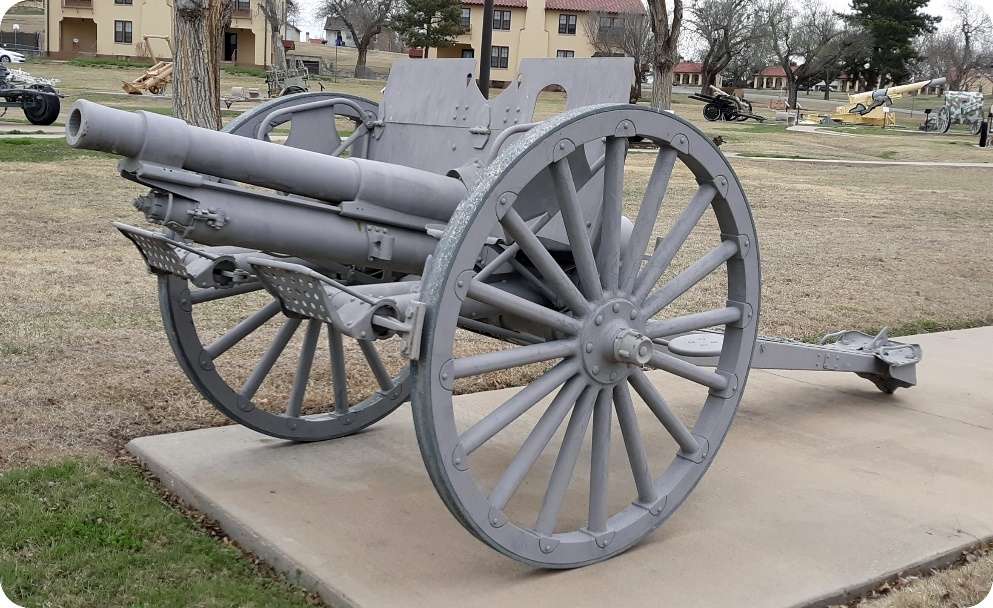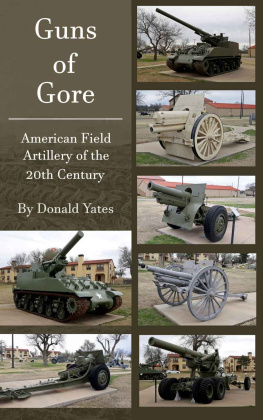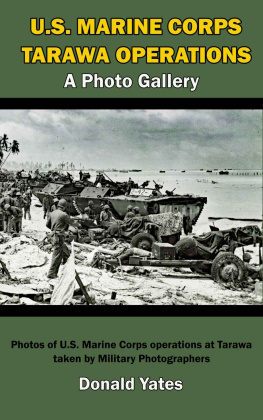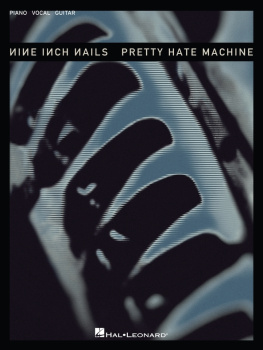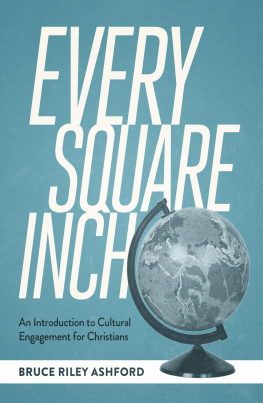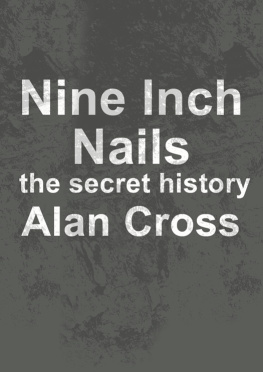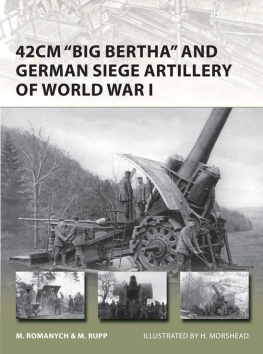I dedicate this book in appreciation of all the men and women who have served in United States military field artillery units throughout the 20 th and 21 st centuries, especially those cannoneers I served with in the 1/320 FA, 1/36 FA, 1/37 FA, 1/38 FA, 2/8 FA, 8/8 FA and 1/15 FA.
I also want to thank the staffs at the National Archives and Records Administration as well as the fine people at the Fort Sill Field Artillery Museum, a must visit if you ever visit Oklahoma. Additionally, I want to recognize my family and thank them for their patience and assistance. My three little dogs, Gizmo, Gidget and Gracie Sue also helped in this project by providing companionship.
Introduction
God fights on the side with the best artillery.
Napoleon Bonaparte
Thank you so much for purchasing Guns of Gore .
Field Artillery is nicknamed the King of Battle because it has a reputation for causing the most casualties on the battlefield. Just how many casualties has the field artillery inflicted on fighting armies over the past few centuries? There is no accurate number given for that, but it must be in the hundreds of thousands or even millions. Modern artillery is even more deadly because of the increased speed in which artillery fire missions can be computed delivered to batteries. Better means of identifying targets because of satellites, radar and aerial observation have also made artillery more effective.
This book is focused on 20 th century field artillery systems of the United States military. Howitzers and guns we discuss include those that can be emplaced or displaced in a reasonably short period of time. We do not discuss coastal, railroad or anti-aircraft artillery. Some American field artillery units have utilized foreign artillery systems in the past. In fact, two of the main systems in use at this publishing date in 2021 were designed by British companies (M119 & M777). Foreign made or designed howitzers that were utilized by U.S. forces will be included in this book. The 155 mm M777 was introduced to the U.S. military in 2005, the 21 st Century, so you get a bonus. There are also a few howitzers and guns that were developed in the 19 th century, but they were heavily used by the U.S. forces in the 20 th century, so they are discussed.
For each gun segment we will discuss the guns capabilities along with its strengths and weakness. We also provide over 80 photographs of howitzers and guns, some which have never been published. We hope you enjoy this book and recommend it to your colleagues and friends. During my career I worked on the M102, M119, M198, M114, M110, and M109A6, so I share some personal experiences and opinions on these guns.
75 mm Gun M1897
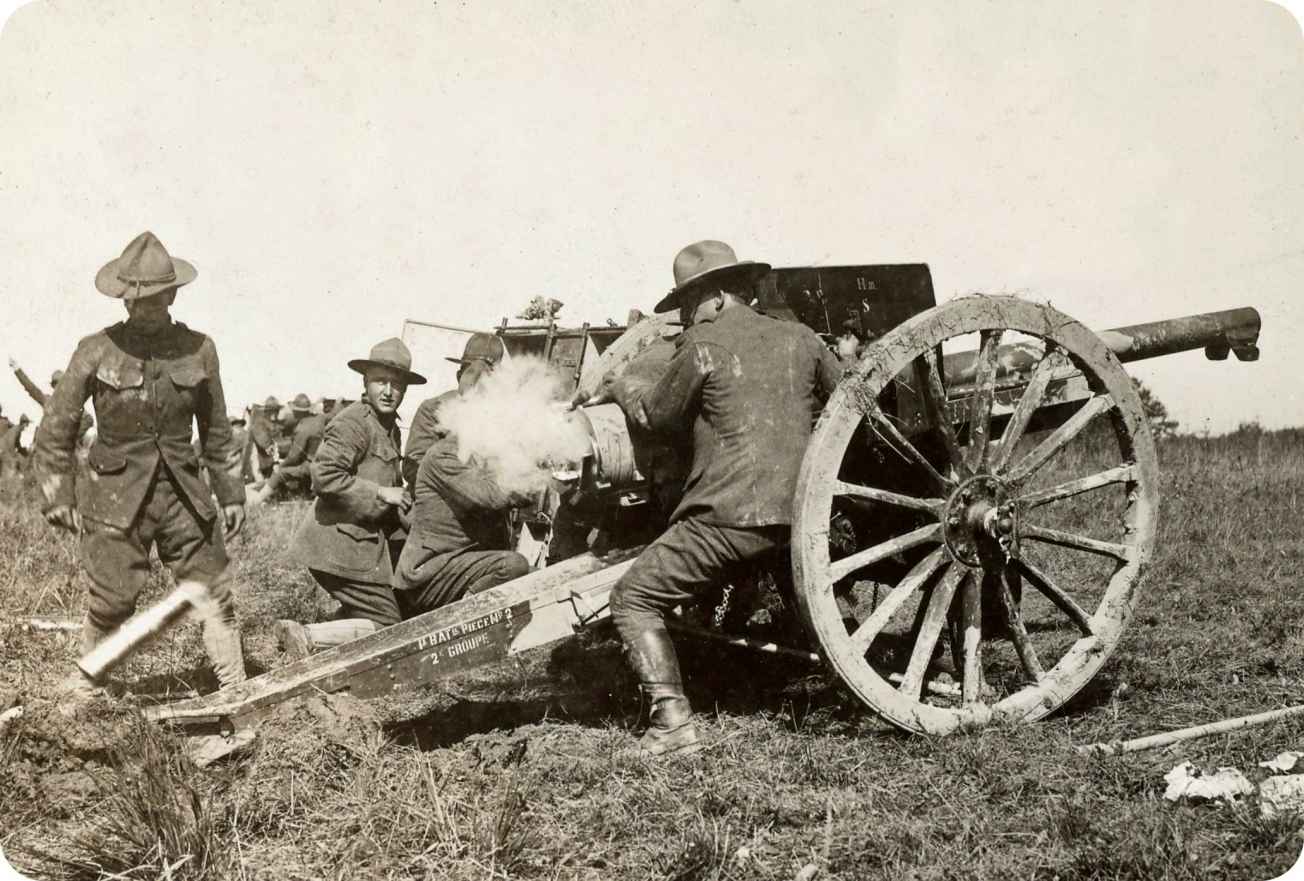
A 75 mm Gun M1897 just after firing. Photo from U.S. National Archives.
The French 75 mm (3-inch) Model of 1897 (Canon de 75 modle 1897) is regarded as the first modern field artillery gun. It had a rifled bore, sights for indirect fire, a recoil mechanism, and breech loading capability. The United States obtained licensing to produce the gun in the U.S. as the 75 mm Gun M1897. This gun was heavily used by United States forces during World War 1. American forces had developed a similarly capable gun, the M1902 3-inch field gun, but chose to adopt the French 75 mm gun due to ally ammunition compatibility concerns.
The American M1902 was made for ammunition about 1 mm larger than the French 75 projectiles. The M1902 gun was kept in the U.S. for training use. The French 75 mm (3-inch) gun could fire a 12-to-16-pound rounds up to 11,000 meters (6.8 miles) with the effective range reaching 8,000 meters (5 miles). With a crew of six this gun could shoot up to 15 rounds per minute. Tens of thousands of these guns were manufactured.
During World War 1 the American Expeditionary Forces fielded nearly 500 French 75 mm batteries. When World War 2 started France and Poland both still relied heavily on the French 75 mm gun. Harry S. Truman, the 33 rd president of the United States, commanded a battery of French 75 mm guns during World War 1. The one glaring weakness of the French 75 mm was that it could not be elevated higher than 18 degrees. That was because of its box trail configuration, which blocked the rear of the tube from going lower. The way this deficiency was mitigated was by digging in the gun at an angle, so the front section was much higher than the rear section. This probably helped with crew protection as well, but still required a lot of work. This issue was corrected by World War 2 when the M1897 was given a new carriage in order to be towed by trucks. It also had split trails, instead of boxed trails, which allowed the gun tube to reach higher elevations without the need to dig in the gun.
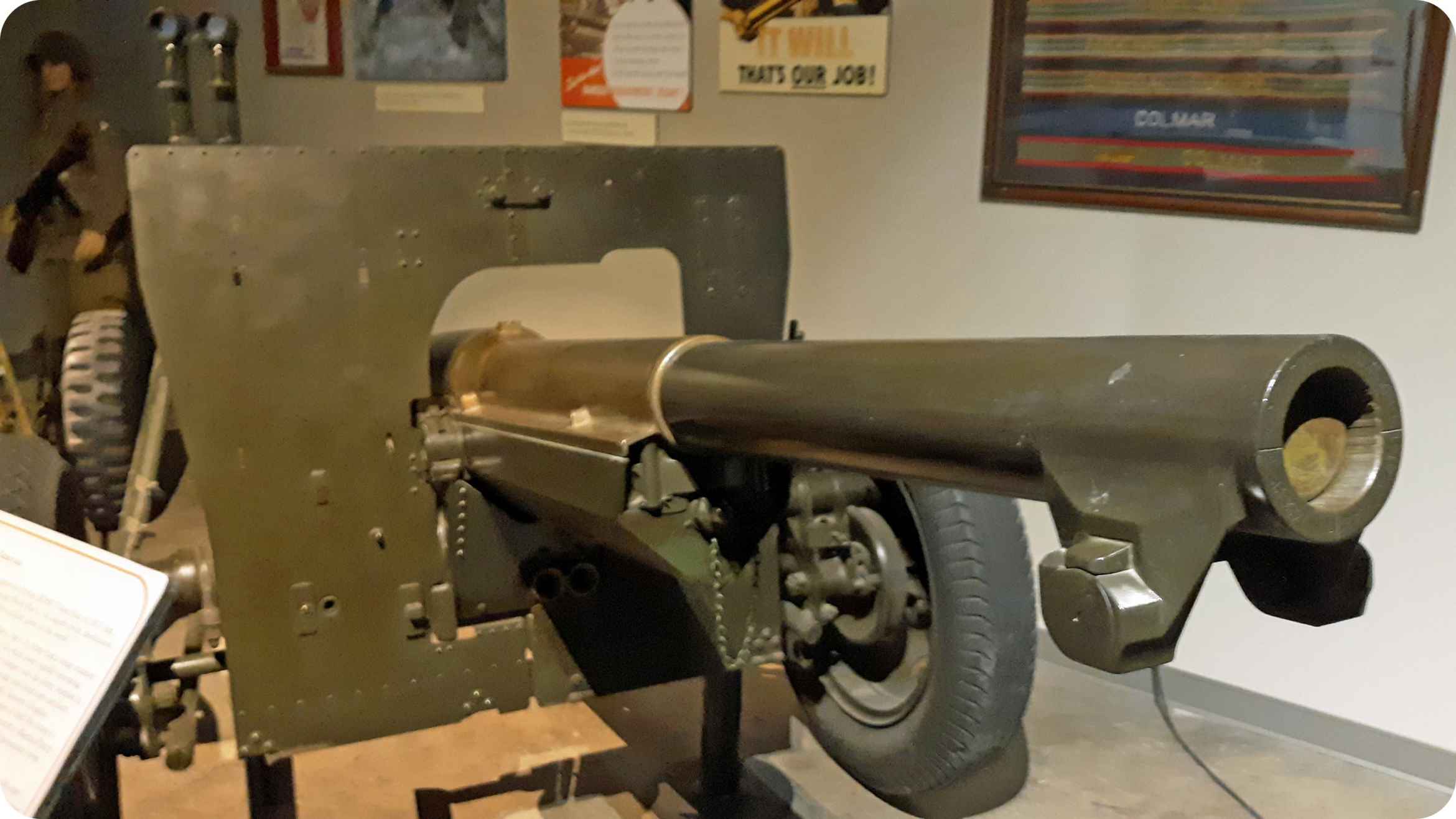
Front view of a French 75 mm Gun M1897 on display inside the Fort Sill Field Artillery Museum. Photo by author.
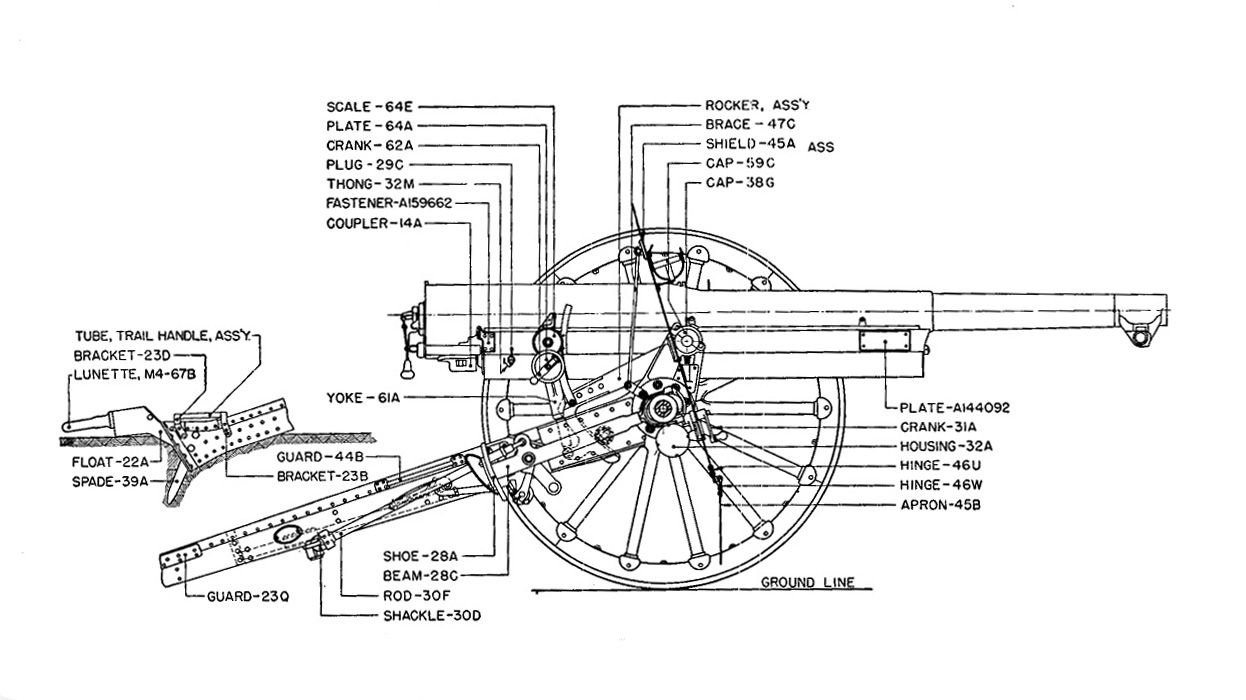
French 75-mm gun carriage M1897M1 - right side view. From U.S. War Department Technical Manual 9-1305.
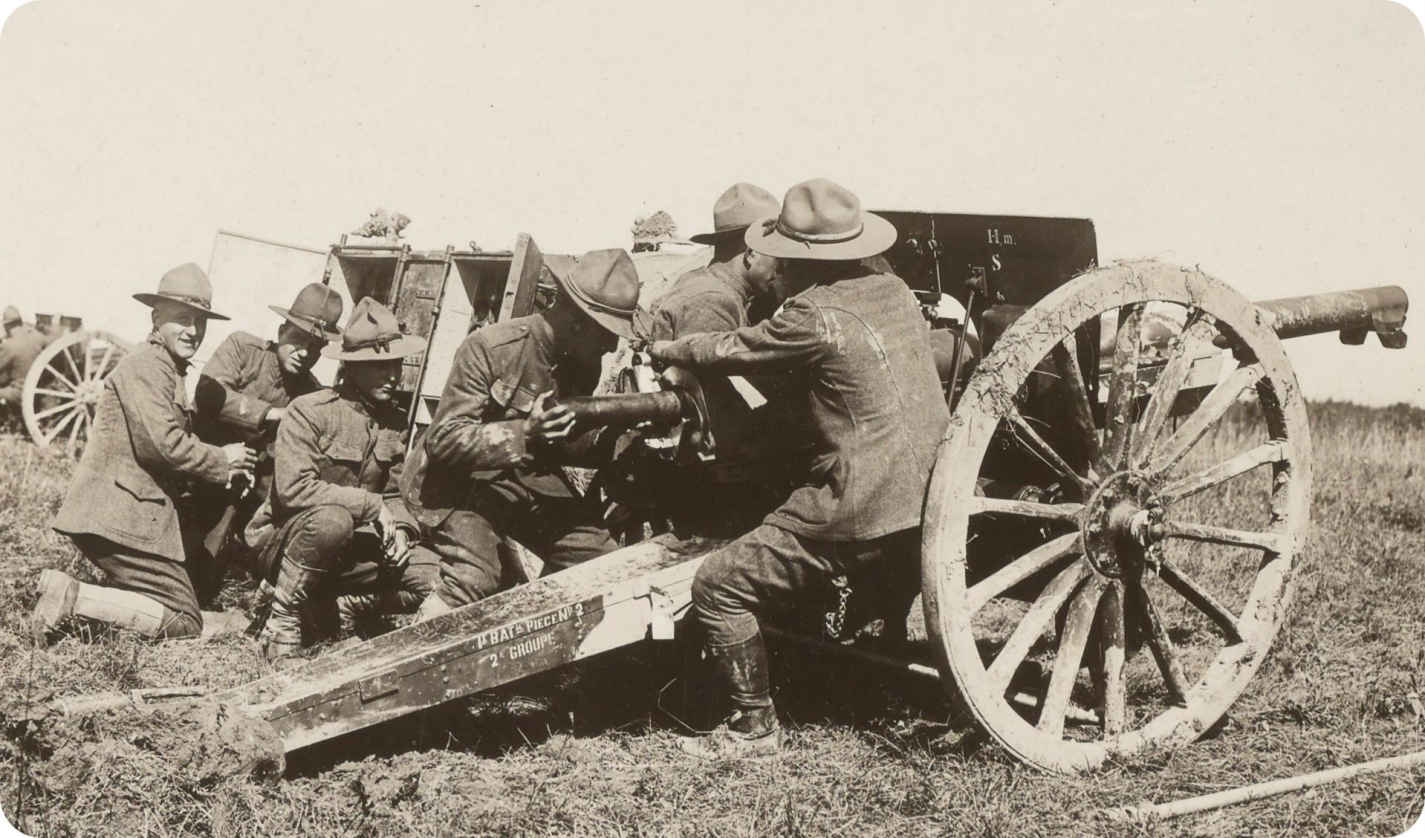
A French 75 mm Gun M1897 is loaded by its crew during World War 1. Photo from U.S. National Archives.
6-inch M1900

Two 6-inch M1900s sit side-by-side during World War 1. Photo from U.S. National Archives
The 6-inch (152.4 mm) M1900 howitzer was used during World Wars 1 and 2. During World War 1, 6-inch guns were commonly used in coastal defense batteries in the United States but were modified to facilitate usage as field guns by mounting the guns tubes on M1917 or M1917A1 carriages mostly produced by Watertown Arsenal in Massachusetts.
The 6-inch M1900 fired 152 mm separate loading ammunition consisting of rounds weighing about 100 pounds. The 6-inch M1900 during World War 1 had a range of approximately 17,000 meters (10.6 miles). During World War 2 the 6-inch M1900 was used primarily in a coastal defense role as the U.S. military had developed superior larger caliber field guns, both towed and self-propelled.
The photo above shows the two variants of 6-inch gun carriages. The M1917 is in the foreground and the M1917A1 is in the background. The two guns look virtually the same, but by looking at the rear area of the guns, above the wheels and tube, you can see a difference in the recoil systems.
3-inch Field Gun Model of 1902
